Front water-based paint for outdoor use instructions. How to calculate the consumption of water-based paint? Application methods, equipment and tools.
If you decide to change the look of your house, and don’t know what material is better to use for this, pay attention to the facade that is especially in demand today. The reason for its popularity is its low cost, excellent performance and ease of application.
Water-based paint for facade work
Everyone knows that a water based paint has a water base. It contains coloring pigments, as well as binding components. In addition, additional additives are introduced into some paints: antifreezes to prevent freezing, antiseptics that protect against and fungus, antifoam agents, plasticizers, etc. Therefore, the emulsion has excellent water resistance and resistance to low temperatures. It does not fade and has a high resistance to various contaminants.
Dispersion paints are available as white interior paints or colorful interior paints. If you want to set your own aesthetic accents, you can also use shades of colors or colors of the creative effect. On highly stressed wall surfaces, for example, wear-resistant paints are used in corridors or stairs. They are also called latex paints, but currently they do not contain mainly natural latex, but are also dispersion paints with a high resin content.
They offer such properties as they had only real latex paints: they are water-repellent, wear-resistant and wear-resistant and very wear-resistant. The same is true for wet rooms for bathrooms and kitchens. In addition to high water resistance, they protect the color film from molds and stains with fungicides.
Facade water-based paint has four varieties:
- acrylic water emulsion - the most common paint with an affordable price;
- silicone water based paint - it contains silicone resins, but its price is quite high;
- silicate paint has an additive of liquid glass, which makes it especially durable;
- mineralhaving cement or lime in its composition, is suitable for working with brick or concrete surfaces, but its service life is short-lived.
According to the technical specifications, the maximum drying time for a water-based facade paint is 24 hours, although there are some brands of paint that dry in just 2 hours. Water-based paint consumption, depending on its brand: 120-150 grams per 1 sq. Km. m
Facade paints for exterior surfaces
Colors for exterior surfaces, such as exterior walls, should protect the masonry from the effects of weather and damage from exhaust fumes. For this purpose, there are special facade paints - at home, mainly synthetic resinous dispersions or dispersion silicate paints. The latter are silicate paints with synthetic resin parts. They are more stable due to silicification with the substrate and better protect against algae and fungi as dispersion colors, but are more expensive than these and more demanding on the process.
Facade paint for outdoor works performs not only a decorative function, for a long time providing the house with a more comfortable and attractive appearance, but also protects the surfaces of walls and roofs from the effects of precipitation, sunlight and temperature changes. High-quality paint will provide better protection, a solid, durable coating, facilitate the staining process and retain its functions and beautiful appearance for a long time. Today, the market has a huge assortment of facade paints for exterior work, made on various bases and designed for various surfaces. In order not to make a mistake when choosing, let's look at the different types of paints and in what surfaces they are intended for.
Depending on the product, facade paints for an even higher protective effect may also contain additives, such as Silicone reinforcements. On the one hand, special nasal paints for facade sealing have, on the one hand, abrasion resistance and, therefore, are easy to clean. On the other hand, they are available in various colors for a pleasant facade design.
Colors for floors in indoor and outdoor
The floors are subject to special loads and therefore create special requirements as the basis for paints. They are protected and decorated with floor coverings - floor paints or special varnishes. Depending on the material, you can protect wooden planks, wooden stairs or parquet floors with a suitable staircase or parquet varnish or wood varnish. The color scheme of your wooden flooring is achieved using high-strength color varnish.
Water based paints
Facade water-based paints for outdoor use, or rather two of their varieties - acrylic (latex) and silicone, are some of the most popular. These types of facade paints for outdoor use are suitable for use on, metal, concrete, and other surfaces.
Modern high-quality water-based paints have the following advantages:
For mineral soils such as concrete or plaster, floor paints are generally also water-soluble dispersions of synthetic resins. They are especially wear-resistant, shockproof and shockproof and resistant to household cleaners. Solvent-based paints are also available for coating or sealing substrates, such as cement, concrete and screed floors, which additionally protect the substrate from moisture and improve cleaning ability. If you want to seal your garage floor, you must choose a product specifically designed for use in garages.
- high vapor permeability - the paint “breathes”, which means it is more durable, not subject to peeling;
- keeps well on virtually any surface - wood, plaster, masonry and brickwork, metal, etc .;
- resistant to atmospheric agents and sunlight;
- the possibility of tinting - you can get any desired shade by adding color to the white base;
- short drying time (on average 1-6 hours);
- the coating of such paints is the most durable - up to 15 years or more;
- resistance to pollution and ability to self-cleaning;
- no specific odor;
- non-combustible;
- environmentally friendly.
Silicone exterior paints for exterior work are more durable and durable than acrylic and suitable for a wider range of surfaces, but significantly more expensive.
Colors for wood primers and wood materials
This is due to the fact that these coatings must withstand enormous loads on tires, fuels, oils or exhaust gases. Acrylic varnishes are water-soluble, low in pollution and suitable for most indoor and outdoor surfaces - also for furniture and children's toys. If you need a particularly stable topcoat, choose a solvent-based synthetic resin varnish.
Special window and door varnishes are available for doors, windows and other floor coverings, which must have a block-protective coating. As a rule, a primer is required when drawing. You can either dilute your varnish or use a special pre-varnish.
Despite the fact that water-based facade paints have an indisputable advantage for outdoor works, in some cases it is preferable to use alkyd (oil paints).
They adhere well to the surface, are durable, but are more likely to peel off and crumble over time. Their use is preferable in two cases:
For exterior wood surfaces that require weathering, protective coating, Recommended garden houses, garden fences, balustrades or railings, weather protection color. With glaze, on the other hand, you can protect and maintain your wooden floors, while maintaining the natural appearance of a tree with its grain.
Metal: Acrylic or synthetic resin varnishes are suitable for normal metal surfaces. Water-based acrylic varnishes are universal, odorless and environmentally friendly. Highly loaded synthetic resin varnishes, on the other hand, contain solvents. For special requirements, there is a wide range of metal protective varnishes for indoor or outdoor applications, such as rust protection, garage doors and other galvanized surfaces or special radiator varnishes designed for substrates with high temperature fluctuations.
- if you paint fragile surfaces, prone to chalking and shedding;
- if the surface has already been painted with alkyd paint 3 or more times.
It is sometimes advised to paint metal surfaces with this type of paint, especially those that may corrode; and also wooden - alkyd paints are waterproof and better protect them from mold and fungus.
The picture does not just decorate; is protection, repair and beauty. Description: Oil, glossy, highly effective oil paint for indoor and outdoor use. Use: in decorative wood items such as doors, windows, tablet ceilings.
Application. Let stand 30 minutes before applying mixed paint. Attach two to three hands with a hair brush; an epoxy roller or an ordinary gun, leaving for a long time 6 and 15 hours between the hands. If you need to dilute the paint for the first coat or primer, use a solvent thinner as a solvent in the proportion of 1 part solvent to 10 parts of the paint. Description: Solvent-based acrylic paint, quick drying, excellent adhesion and performance; specially for demarcation of parking spaces, floors of factories and warehouses.
Alkyd paint can not be applied directly to fresh brickwork and galvanized iron - it is afraid of an alkaline environment and quickly crumbles. In addition, it is more difficult to work with, and, if necessary, it is not as easy to wash off as a water-based emulsion. The disadvantages of this paint include a long drying time - sometimes up to 24 or more hours; sharp specific smell and tendency to burn out.
Textured Acrylic Coating
Surface preparation: The surface must be completely clean and dry. The surface should be rough. Do not apply polished, smooth or “enameled” concrete. Clean with water under pressure, a brush or a broom. Use: Used to decorate concrete and stone surfaces, such as walls, facades, fixed points, patios, building screens, fake skies, etc.
Description: Oil-based paint for air drying for indoor and outdoor use; matte finish, excellent coating and adhesion. Uses: It serves to protect iron and ferrous metals from corrosion caused by environmental humidity. It is used as a first coat before applying enamel.
Textured facade paints for outdoor use
This type of paint, as a rule, has the same basis as water-based paints, and therefore the same characteristics - a high level of vapor permeability, resistance to atmospheric phenomena and sunlight, environmental safety, etc. But the coating formed by textured paints is more durable and stable. In addition, they can be used to mask small surface defects, such as small cracks. To apply such paint, various devices are used, for example, special texture spatulas, combs, rollers, etc., with the help of which a special, patterned surface structure is created.
Water-repellent, water-soluble acrylic paint for external use, matte finish, excellent hiding power, adhesion and durability. It retains its color and appearance. To protect and decorate the facades and "heads" of houses and buildings on concrete and brick surfaces, asbestos-cement tiles and plaster.
Basic interior painting Type 3
Vinyl acrylic paint is diluted with water for indoor use with a matte finish, good hiding power and ease of application. Used: for finishing surfaces made of concrete, gypsum, plaster, asbestos cement, ceilings and doors. Description: Oil-based paint for air drying for indoor and outdoor use; Glossy finish, excellent coating and adhesion. Black and white colors also have a matte version.
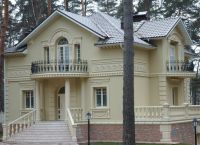 |
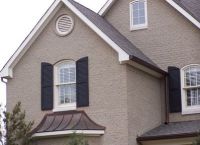 |
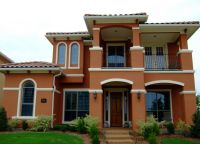 |
 |
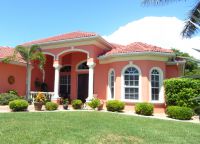 |
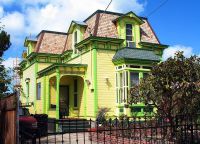 |
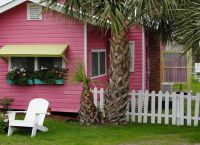 |
 |
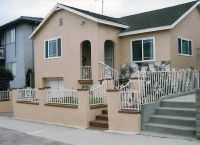 |
